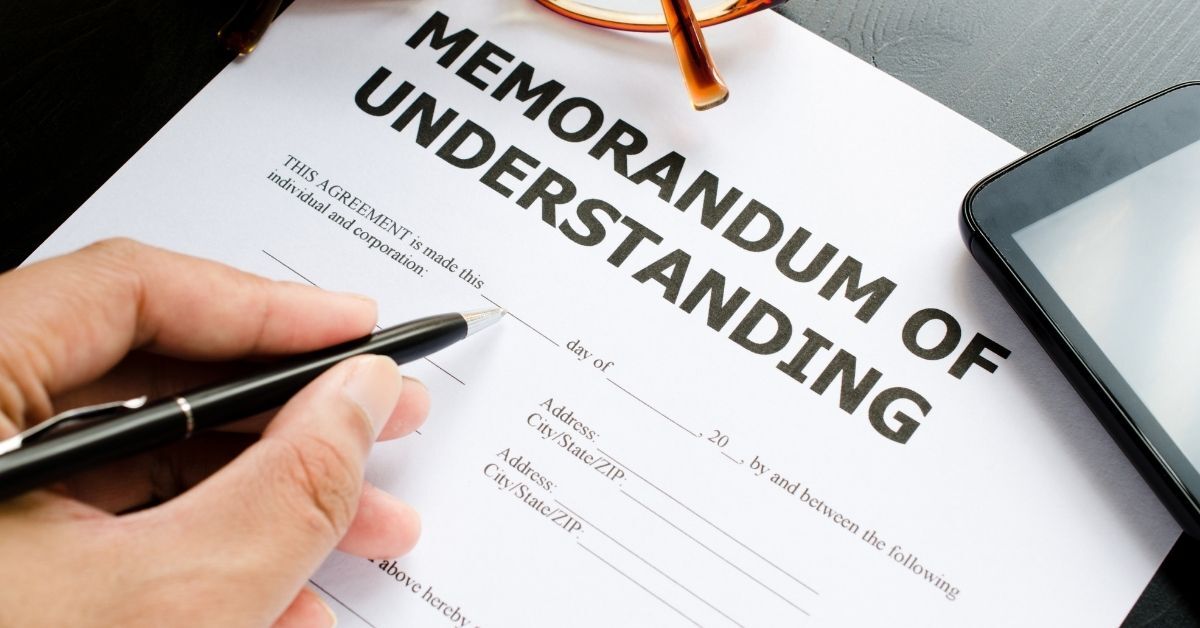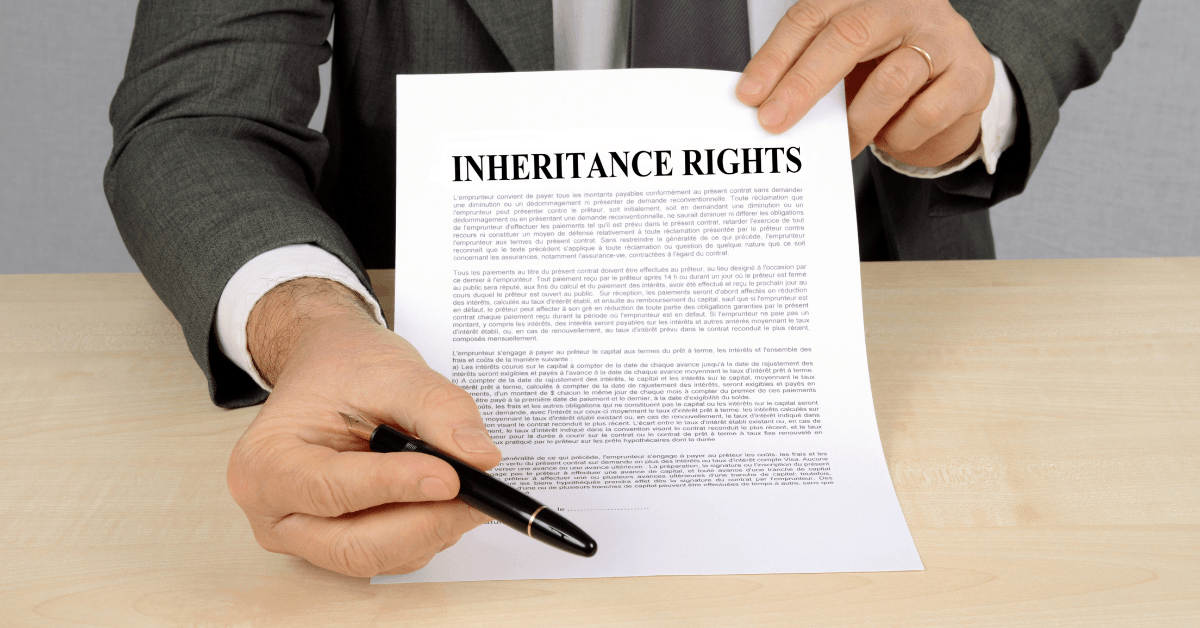What is a Memorandum of Understanding (MOU) & Why Use One?
What is a Memorandum of Understanding (MOU) And Why Use One?
A memorandum of understanding (MOU) is a legal document that sets forth the agreement between two parties. This is usually a commercial relationship.
It spells out the terms and conditions of the relationship, and establishes the responsibilities of each party.
A MOU can be used to establish a business partnership, outline the terms of a contract, or govern any other type of relationship. Whether in Australia or overseas, the MOU always serves as an outline for a formal contract, and is rarely considered a legally binding document.
Here's what makes a MOU different.
A Memorandum of Understanding is not a contract, though it sounds like one. It is not legally binding, and does not create any legal rights or obligations. However, it can be used as the basis for a future contract. A MOU can also be helpful in resolving disputes, since it provides a written record of the agreement between the parties.
Despite the fact that the Memorandum of Understanding is not a legally enforceable document, it still serves a very important purpose.
The terms of a MOU are often less detailed than those in a contract. This is because a MOU is not a legally binding agreement. It is also shorter and less formal than a contract.
What is the purpose of MOU?

MOUs are used to establish mutual goals between two or more parties. By setting out specific objectives and working together, both sides can benefit from the agreement and eventually create legally binding obligations. MOUs can be used for a variety of purposes, such as developing a business relationship, sharing knowledge, or co-operating on a project.
The Memorandum of Understanding can be useful for both businesses and individuals. For example, if you're starting a new business, you can use a MOU to outline the terms of your working relationship with suppliers and customers. This will help to avoid any misunderstandings when entering a formal contract further down the line.
Individuals can also use MOUs to formalise a binding contract between friends or family members. For example, if two people want to share a car, they could draw up a MOU to set out the terms of their agreement.
MOUs are generally not legally binding, but they can be helpful in setting out the expectations of both parties involved. If one party breaches the agreement, the other party may have grounds for taking legal action.
When drafting an MOU, it's important to make sure that all parties involved are aware of what's included. The document should be clear and concise, and it should spell out the consequences of breaking the agreement. It's also a good idea to have a lawyer from a commercial law firm review the MOU before signing it.
Types of MOU
There are two types of Memorandum of Understanding: bilateral, and multilateral.
A bilateral memorandum of understanding is an agreement between two parties, while a multilateral memorandum of understanding is an agreement between more than two parties.
What is a Bilateral MOU?
A bilateral memorandum of understanding is a type of preliminary written agreement that two parties make. This type of agreement is usually used to outline the responsibilities of each party, and can be used for a number of different reasons.
What is a Multilateral MOU?
A multilateral memorandum of understanding is an agreement between more than two parties. This type of agreement is often used when multiple parties want to work together on a project or goal. This can also help to outline the responsibilities of each party.
Key Components of MOU
The key components of an MOU typically include the following:
- The names and contact information of the parties involved
- The roles of the parties involved
- The purpose of the agreement
- The governing law
- The effective date of the agreement
- The shared goal
- Important dates and commitments
- Dispute resolution measures
- The names and contact information of the parties involved
Every MOU is unique, and the content depends on the nature of the partnership. Seek legal advice before you enter further negotiations for understanding legally binding agreements.
MOU vs Contracts: What are the differences?
A MOU is more like a gentlemen’s agreement – it is an agreement that is generally not legally enforceable.. A contract, on the other hand, is a legally binding agreement between two parties. Both parties, however, are focused on a mutually beneficial goal. The difference lies in this– a legal contract is a serious declaration that binds the parties in law, while an MOU just outlines the preferred outcome.
A MOU usually outlines the broad strokes of an agreement, while a contract goes into more specific details. A MOU is typically used as a stepping stone towards a more formal agreement, such as a contract.
In detail, here are the differences between the two.
| Criterion for differentiation | Agreement | Memorandum of Understanding |
|---|---|---|
| Definition | An agreement is a contract in which two parties have decided to collaborate for the purpose of achieving a shared goal which sets out the terms and conditions that the parties seek to be bound by. | A Memorandum of Understanding or MoU is a legal document that describes the terms of an arrangement between two or more parties forming a bilateral or multilateral agreement. |
| Components | Offer, Acceptance and Consideration | Offer, Acceptance, Consideration and Intention |
| Legal Enforceability | A contract can be made enforceable in a court of law. | A Memorandum of Understanding is not a legal document and generally canno tbe enforced in a court of law. |
| Binding Nature | All parties are bound by it. | It is only binding if it is signed in exchange for money and generally states in the document that the parties intend to be bound |
| Collateral Right | Yes | No |
| Form | Oral or written | Written |
FAQS
Does MOU need to be notarised?
No, an MOU does not need to be notarised. However, both parties may wish to have the document witnessed and/or signed by a third party as a show of good faith. If either party plans to enforce the terms of the MOU in court, they may want to consider having the document notarised as additional evidence.
How long is a MOU valid?
An MOU is typically valid for a period of two to three years. After that, the agreement may be renewed or renegotiated as needed.
Is MOU valid in court?
There is no definitive answer to this question, as the validity of an MOU may vary depending on wide variety of factors such as the specifics of the agreement, the jurisdiction in which it is being enforced, the intentions of the parties and the circumstances surrounding the agreement itself.
However, in general, a MOU is more likely to be upheld in court if it is clear, concise, and includes all relevant information regarding the parties' obligations and rights. Additionally, both parties must sign the MOU for it to be legally binding. If one party refuses to sign, a court may not enforce the agreement.
What is the difference between an MOU and a MOA?
In Australia, a MOU, or memorandum of understanding, is a less formal agreement between two parties, whereas a MOA, or memorandum of agreement, is a more formal and binding agreement. A MOU typically outlines the terms of an agreement in less detail than a MOA, and is not legally binding. A MOA is more detailed and specific, and is legally binding.
A MOU is also less likely to be litigated than a MOA.
Can a MOU be cancelled in Australia?
Yes, a MOU can be canceled. However, the process for canceling a MOU varies depending on the terms of the agreement. In some cases, either party may cancel the MOU by providing written notice to the other party. In other cases, cancellation may only be allowed if both parties agree to it. If there is a dispute over whether or not an MOU can be canceled, the dispute may need to be resolved in court.
How do I terminate a MOU?
The steps for terminating an MOU are relatively simple. The parties simply need to agree on the termination and notify the other party in writing.
Once the termination is agreed upon, each party needs to provide written notification of the termination to the other party. This can be done through email, a formal letter, or even a phone call. It is important to make sure that the notification is clear and concise, so that there is no confusion about the end of the MOU.
Once the other party has been notified, the MOU is considered terminated. Both parties are then free to pursue other agreements or relationships. It is important to note that, depending on the terms of the MOU, there may be certain conditions or requirements that must be met before the MOU can be terminated. For example, some MOUs may require a certain notice period before termination can occur. Be sure to check the terms of your MOU before taking any action to terminate it.
What happens when a MOU expires?
When an MOU expires, the terms and conditions of the agreement are no longer in effect. The parties are free to renegotiate the terms of the agreement, or terminate the agreement entirely. If the MOU is renewed, the new agreement will contain updated terms and conditions that reflect any changes in the parties' circumstances.
Is a MOU an enforceable contract?
An MOU itself is generally not a legally binding contract, but it can be used as evidence of an agreement between two or more parties. An MOU may also include provisions that are legally binding, such as provisions related to confidentiality or non-compete agreements. Generally, a MOU will be less formal than a contract and may be easier to negotiate and execute.
How much detail does my Memorandum of Understanding need?
The amount of detail you need in a Memorandum of Understanding (MOU) depends on the complexity of the project and the level of detail you want to cover. An MOU can be as simple or as detailed as you need it to be. You may want to consult with a lawyer to help you draft an MOU that is specific to your project.
Some key items to consider when drafting an MOU include:
- The purpose of the MOU
- The parties involved
- The project scope and timeline





